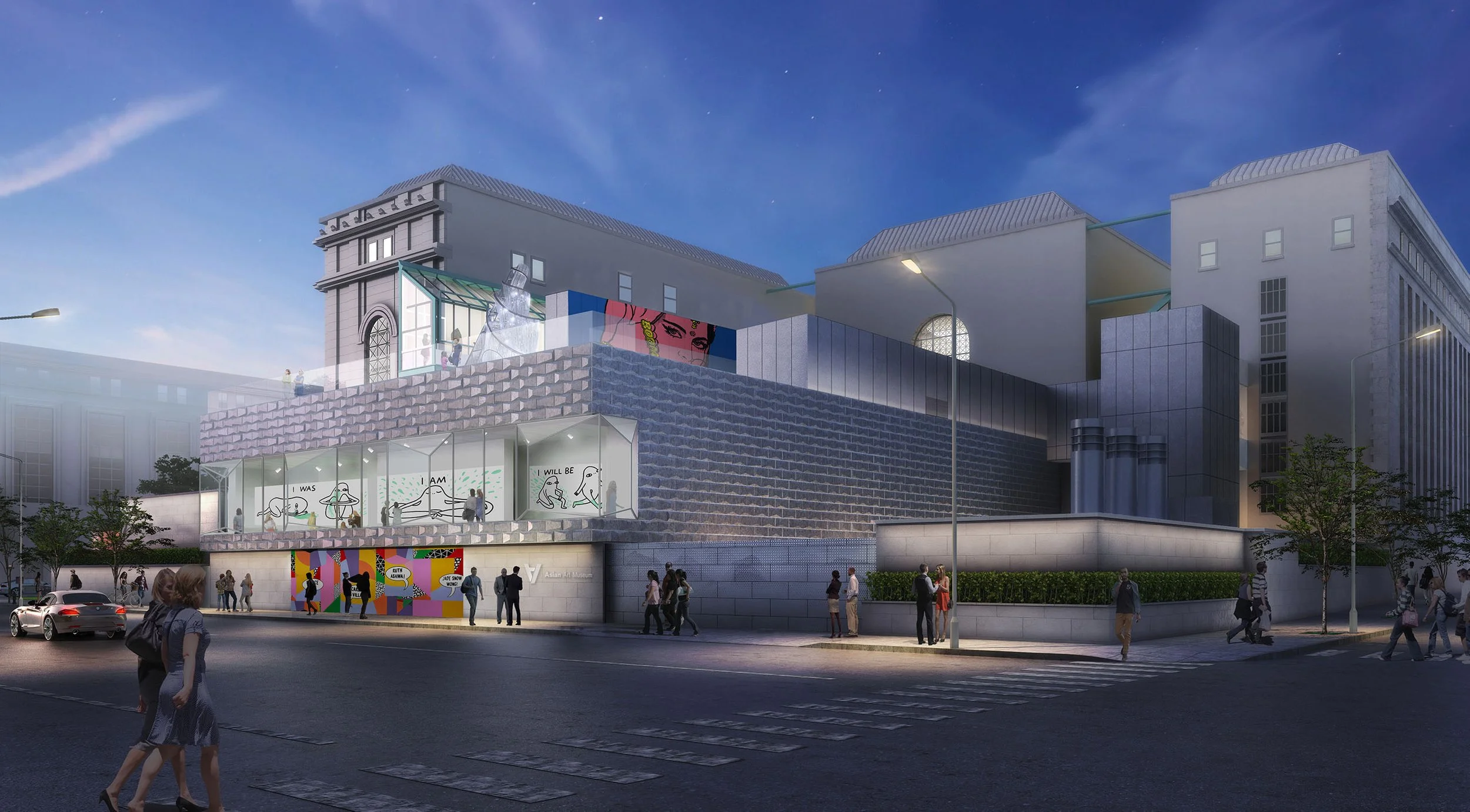Space to See: The Permanent Collection Galleries at the Asian Art Museum
Originally published by WHY Architecture
Sight is selective – our eyes are like searchlights, pinpointing what we we’re drawn to see based on prior experience. This tendency is helpful when grocery shopping or crossing a busy road – but it’s less beneficial in museum environments. What if we only ever saw what we were expecting, or what we believed to be valuable? Life would be less colorful, less adaptive, less creative. Luckily, well-designed spaces can turn the phenomenon of selective vision to human advantage.
That’s the thinking behind the redesign of the permanent collection galleries at the Asian Art Museum in San Francisco, part of our 5-year collaboration to transform the visitor experience. The museum has a collection of more than 18,000 treasures of Asian art, representing 6,000 years of history and diverse cultures from across an entire continent. That said, the sheer wonder of a collection doesn’t necessarily make it accessible. Designing gallery spaces requires a certain amount of pragmatism (the realization that not everyone will be immediately inspired by a vitrine of ancient Chinese bronzes) combined with an open-minded optimism: the conviction that we all have the capacity to find and follow our curiosity, given the right circumstances.
As designers, we see those circumstances as primarily spatial. In the case of the Asian Art Museum collection galleries, it was necessary to defragment the spaces and clarify circulation to shape an engaging narrative journey. It was equally important to light a path through those spaces, allowing visitors of all backgrounds find a personal point of entry into the cavernous collection.
Working closely with curators, we designed sites of pilgrimage throughout the galleries to highlight key masterpieces – individual works selected for their rarity, beauty, historical importance, and cultural impact. By creating contemplative environments characterized by specialist casework, digital touchpoints, custom lighting, vibrant colors, and comfortable seating, our goal was to invite visitors to pause with each masterpiece, creating a mood that illuminates a work’s particular aura and significance. From there, the visitor might branch out to explore the neighboring exhibits, equipped with a new toolkit of knowledge about specific techniques and cultural practices – or simply to follow a feeling sparked by the masterpiece.
When we asked Dr Jay Xu, Director of the Asian Art Museum, to pick out his favorite masterpieces, he selected a rare bronze rhinoceros and a mystical jade cup, revealing the personal significance and intrigue of each object:
Ritual vessel in the shape of a rhinoceros
China, 1100-1050 BCE, Bronze
“This rare bronze rhinoceros is a personal favorite of mine – and we couldn’t resist providing it with its own stage for viewing in the round. The custom casework and lighting allows for an incredibly clear view of the mottled patina of the bronze, and if you look closely you can see the folds in the rhino’s hide. This piece is unique in its naturalistic representation of the animal’s form, and you really get a sense of its weight, gravitas… and secret sense of humor.
Once you’ve had a close look, you can sit on one of the benches and read about the work in greater detail – or look around at the other bronzes for which the rhino provides a point of reference. I particularly like the way that the benches are divided into three, inviting different clusters of visitors to observe the rhino at the same time – multiple perspectives coming together with a shared curiosity for this ancient and animate object.”
-Jay Xu
Cup with calligraphic inscriptions
Uzbekistan, approximately 1447–1449, Nephrite
“This lustrous jade cup (one of only two surviving examples) was treasured by the Mughal emperors, and we’ve singled out in its own casework to highlight its atmosphere of mystery and luminosity. While the cup is less than two inches in diameter and only over one inch tall, its small size only amplifies its preciousness – white jade is rarer than green jade, and the directed spotlighting makes it seem as though the light is being emitted from the material itself.
Installed on the wall, the cup appears like a torch – a digital touchpad provides more information, but you can just as easily stand and enjoy the masterpiece on its own terms. The two calligraphic inscriptions (in Arabic and Persian) are intricately intertwined, and the surface patterns can be enjoyed for their visual complexity as much as their verbal significance.”
-Jay Xu
For WHY’s Creative Director Kulapat Yantrasast, his chosen masterpiece was the Joseon-era moon jar (a WHY favorite which also appeared in a recent article about architecture and ceramics):
Korea, approximately 1650–1750, Porcelain with clear glaze
“It’s almost impossible to overstate my love and obsession for moon jars. As objects, they seem to me to uncannily represent our human conditions at their best; never perfect, still striving, and calmly balanced in their own distinct beauty. The shape and skin of each moon jar is as unique as our own skin and form. It gently implies the process of how it was made, without deflecting from its aura and presence – humble, and quiet, and radiant at the same time. Our design for the installation is equally unobtrusive; the moon jar is placed a little off-center in a large cabinet of cedar wood, with a minimal cedar bench directly in front. Like the moon jar itself, you can simply be present.”
-Kulapat Yantrasast
You can discover your own chosen masterpieces by exploring the Asian Art Museum website – but there’s nothing quite like visiting the museum in person, dwelling in the physical presence of ancient works which have inspired individuals and communities for millennia. Our design for the permanent galleries is about making space to see, and these masterpieces don’t just illuminate the museum experience. They have the potential to subtly change the way we perceive the world around us, placing daily life in the context of care, craftsmanship, energy, and stillness.
Originally published by WHY Architecture

